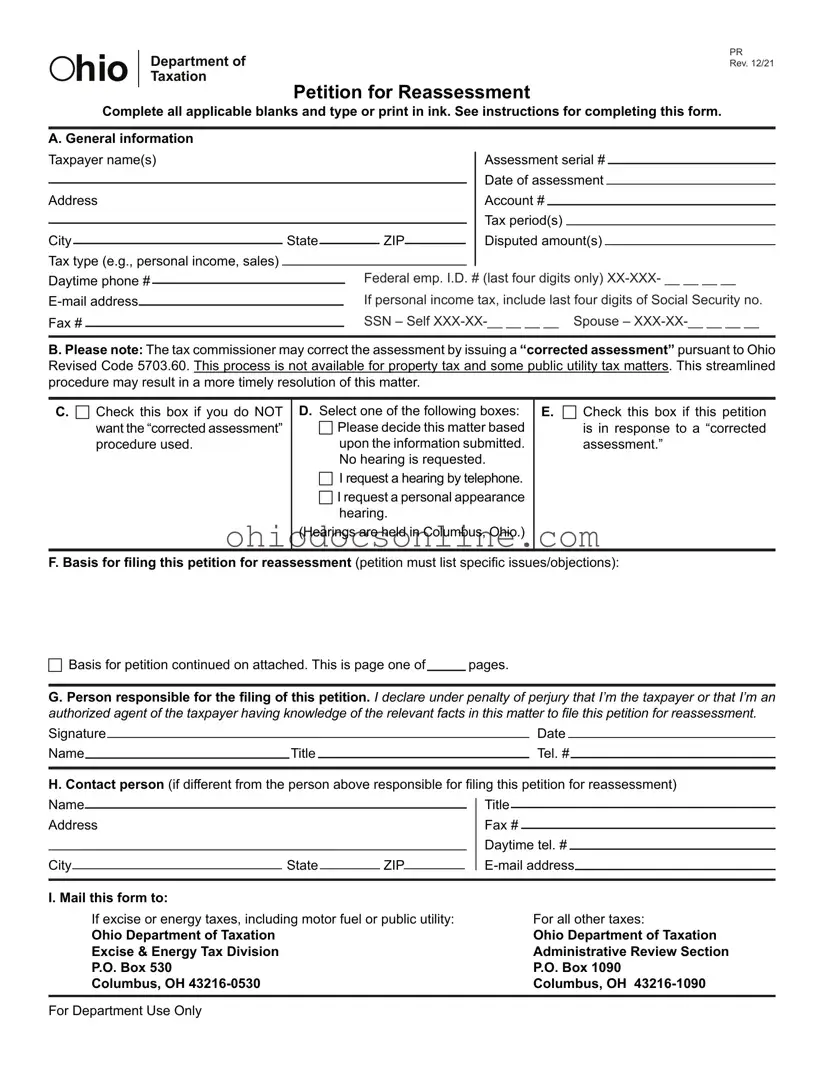Ohio Petition For Reassessment Template in PDF
The Ohio Petition For Reassessment form is a document that allows taxpayers to formally contest an assessment made by the Ohio Department of Taxation. This petition serves as a means to request a review of the assessed tax amount, enabling taxpayers to present their case and seek a resolution. Understanding how to correctly complete and submit this form is crucial for those looking to challenge their tax assessments effectively.
Open Editor
